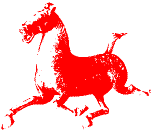
 |
||||||||||||
| malay concordance project | ||||||||||||
| home | about | papers | blogs | searching | texts | direct search | ||||||
Bestari
The word bestari or the adjective to be more precise, is commonly understood as meaning intelligent or discerning, especially in its modern usage.1 In R.J. Wilkinson’s A Malay-English Dictionary (1959) bestari is defined as well-bred, accomplished. Similarly, in R.O. Winstedt’s An Unabridged Malay-English Dictionary (1965) the word is defined as accomplished, well-born and well-bred. In Winstedt’s monolingual work Kamus Bahasa Melayu (1960) bestari is definded as ‘baik bangsa-nya lagi berbahasa’ (fine descent as well as fine speech/manners). While translation of the word may seem straightforward, a closer examination of its usage in classical Malay tests like Hikayat Indraputra and Syair Bidasari highlight its depth and complexity.
The word bestari predominately appears in pantun lines. This may be for the simple fact that it rhymes easily with many words. The word rhymes easily with words like lari, cari, hari and the wide range of words that build on these base words. Moreover the adjective rhymes with the name of the heroine of Syair Bidasari. Nevertheless there is more to bestari than just being a convenient rhyme. Rather it is an adjective regularly spoken by or describing larger-than-life figures, often royalty.
The use of bestari stresses more than just intelligence but also descent or upbringing. In Syair Bidasari there are several examples of the use of bestari to connote the fine descent of royal figures. Frequently this serves the purpose of appeasing the jealous queen of the story. For example the king of Indraputra tells the queen that there is no one in the kingdom of equal pedigree to her:
Adinda pun bijak lagi bestari
Di manakan lagi dapat dicari
Jika dicari seluruh negeri
Tiada yang setara adinda putri(16:1a-16:1d)
In a similar vein, one of the queens’ maids tries to appease the queen by referring to her fine descent:
Sembahnya dayang Dang Baiduri
“Kasih patik akan tuan putri
Di manatah lagi patik nan cari
Tuankulah raja yang bestari”(34:7a-34:7d)
In this instance there is a direct reference to royalty in relation to the quality of bestari. In contrast the use of the word in Hikayat Indraputra has a more general tone. In Indraputra’s pantun intended for putri Kemala Ratnasari, the orang bestari is juxtoposed with the imagery of a sparrow-hawk seizing its prey:
Apa dicari bayan terbang
rajawali menyambar dia
apa dicari dayang berulang
orang bestari mendapat dia(Hikayat Indraputra, p. 72)
Here bestari seems to stress cleverness or accomplishment more than descent or family. Yet at the same time one has to remember who is uttering these words and that it is possible that Indraputra is subtly saying that he is the orang bestari outwitting the nymphs. Wilkinson cites a few pantun lines from Syair Burung Punggok to elaborate his definition of bestari:
jika sungguh tuan bestari
mengapa malu ditentang dayang(cited in Wilkinson, 1959, pp. 131-132)
In Wilkinson’s words this translates as “if you are versed in social graces need you look shy at the sight of a girl” (1959, pp. 131-132). This interpretation emphasises bestari as refinement, which largley fits with the way the word is used in Hikayat Indraputera and Syair Bidasari. However there is another dimension to bestari, albeit a subtle one, that is most clear in Syair Bidasari.
In Syair Bidasari in particular, one senses that there is a male kind of bestari and a female kind of bestari. For example in Syair Bidasari male characters are always agus bestari while female characters are bijak bestari. While both share a fundamentally similar meaning-that is referring to a characters’ fine descent-there is definitely a different tone in the two phrases. This contrast between the female and male quality of bestari is made clear in an early verse of Syair Bidasari:
Sukanya bersyair tuan putri
“Ayoh kakanda agus bestari
Jika ada perempuan bijak bestari
Hendakkah lagi kakanda beristri”(15:5a-15:5d)
Interestingly the male quality of bestari is associated with the word agus (bagus) which can be translated as fine, handsome in this context. Meanwhile the female quality of bestari is associated with the word bijak, which in this context may be translated as discreet, modest, tactful or perhaps elegant. There are several examples of the use of bijak bestari to describe desirable traits in a wife. For example the king tells his wife:
Adinda pun bijak lagi bestari
(16:1a)
In this instance the sentence structure is slightly different yet the effect is similar. Similarly the queens’ maids compare Siti Bidasari with a nymh using similar language:
Sekalianlah gerangan bidadari
Seorang tak banding dalam negeri
Lakunya patut bijak bestari
Namanya Sitilah Bidasari(32:1a-32:1d)
It is of worthy of note that this comment precedes the lengthy description of Bidasari’s physical beauty. Furthermore it echoes the queen’s question to the king: if there was a woman more elegant than her, would he take her as his wife?
The word bestari has hidden depths. Translation of the word may seem straightforward but a closer look at classical Malay texts highlights the complexity associated with its usage. Its association with royalty and figures of mythical proportion is not captured by any simple translation of the word. Furthermore certain phrases in these texts illuminate the possibility that there are distinctly male and female kinds of bestari.
Texts Cited
Hikayat Indraputra
Syair Bidasari
References
Malay Concordance Project - http://online.anu.edu.au/asianstudies/proudfoot/MCP/
Wilkinson, R.J., An Abridged Malay-English Dictionary (Romanised), Singapore, Kelly and Walsh Ltd., 1919.
Wilkinson, R.J., A Malay-English Dictionary (Romanised), London, Macmillan and Co., 1959.
Winstedt, R.O., Kamus Bahasa Melayu, Kuala Lumpur, Marican and Sons Ltd., 1960.
Winstedt, R.O., An Unabridged Malay-English Dictionary, Kuala Lumpur, Marican and Sons Ltd., 1965.
1 Interestingly, students at UMM (Universitas Muhammadiyah Malang) in East Java, Indonesia publish a student newspaper titled Bestari.
| top |